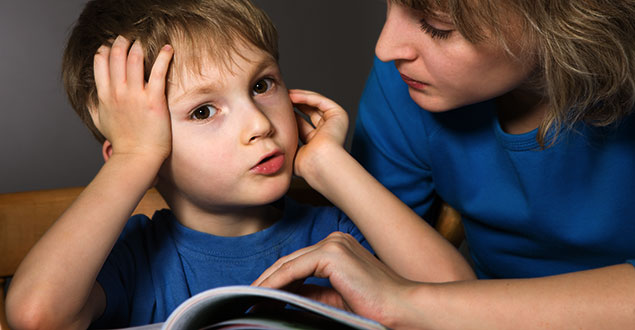Attention Deficit & Hyperactivity Disorder
What is Attention Deficit & Hyperactivity Disorder
Attention deficit hyperactivity disorder (ADHD) is a mental disorder of the neurodevelopmental type. It is characterized by difficulty paying attention, excessive activity and acting without regards to consequences, which are otherwise not appropriate for a person’s age.
Individuals with ADHD exhibit symptoms based on sub-type:
- Inattentive
- Hyperactive
- Combined

ADHD classifications
1- Hyperactive-impulsive type act “as if driven by a motor” with little impulse control — moving, squirming, and talking at even the most inappropriate times. They are impulsive, impatient, and interrupt others..
2- Inattentive type (formerly called ADD) are easily distracted and forgetful. They may be daydreamers who lose track of homework, cell phones, and conversations with regularity. lacks lag in cognitive development and language
3- Combined type display a mixture of all the symptoms outlined above
ADHD symptoms
There are nine symptoms that suggest ADHD– Inattentive and nine that suggest ADHD- Hyperactive/Impulsive. A child may be diagnosed with ADHD only if he or she exhibits at least six of nine symptoms from one of the lists below, and if the symptoms have been noticeable for at least six months in two or more settings — for example, at home and at school.
The symptoms must interfere with the child’s functioning or development, and at least some of the symptoms must have been apparent before age 126. Older teens and adults may need to consistently demonstrate just five of these symptoms in multiple settings
Inattentive Type Symptoms
- Often fails to give close attention to details or makes careless mistakes in schoolwork, at work, or during other activities (e.g., overlooks or misses details, work is inaccurate).
- Often has difficulty sustaining attention in tasks or play activities (e.g., has difficulty remaining focused during lectures, conversations, or lengthy reading).
- Often does not seem to listen when spoken to directly (e.g., mind seems elsewhere, even in the absence of any obvious distraction).
- Often does not follow through on instructions and fails to finish schoolwork, chores, or duties in the workplace (e.g., starts tasks but quickly loses focus and is easily sidetracked).
- Often has difficulty organizing tasks and activities (e.g., difficulty managing sequential tasks; difficulty keeping materials and belongings in order; messy, disorganized work; has poor time management; fails to meet deadlines).
- Often avoids, dislikes, or is reluctant to engage in tasks that require sustained mental effort (e.g., schoolwork or homework; for older adolescents and adults, preparing reports, completing forms, reviewing lengthy papers).
- Often loses things necessary for tasks or activities (e.g., school materials, pencils, books, tools, wallets, keys, paperwork, eyeglasses, mobile telephones).
- Is often easily distracted by extraneous stimuli (for older adolescents and adults, may include unrelated thoughts).
- Is often forgetful in daily activities (e.g., doing chores, running errands; for older adolescents and adults, returning calls, paying bills, keeping appointments).

Hyperactive-impulsive type Symptoms
- Often fidgets with or taps hands or feet or squirms in seat.
- Often leaves seat in situations when remaining seated is expected (e.g., leaves his or her place in the classroom, in the office or other workplace, or in other situations that require remaining in place).
- Often runs about or climbs in situations where it is inappropriate. (Note: In adolescents or adults, may be limited to feeling restless.)
- Often unable to play or engage in leisure activities quietly.
- Is often “on the go,” acting as if “driven by a motor” (e.g., is unable to be or uncomfortable being still for extended time, as in restaurants, meetings; may be experienced by others as being restless or difficult to keep up with).
- Often talks excessively.
- Often blurts out an answer before a question has been completed (e.g., completes people’s sentences; cannot wait for turn in conversation).
- Often has difficulty waiting his or her turn (e.g., while waiting in line).
- Often interrupts or intrudes on others (e.g., butts into conversations, games, or activities; may start using other people’s things without asking or receiving permission; for adolescents and adults, may intrude into or take over what others are doing).”


